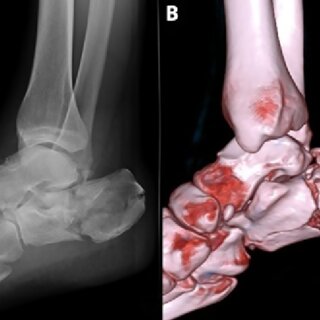Neck Pain Prevention and Treatment: How to Improve Mobility

Neck pain is an issue that can disrupt daily life, affecting mobility and productivity. While occasional discomfort can result from minor strain, chronic neck tension and reduced neck mobility often stem from deeper, long-term causes. Addressing these factors can help alleviate pain and improve overall function.
Causes of Neck Pain
The origins of pain in the neck are varied, but many cases are linked to poor habits and external stressors. Poor posture, particularly during sedentary activities such as desk work, is a significant contributor. Prolonged periods with the head tilted forward or shoulders rounded place strain on the neck muscles, leading to discomfort.
Stress is another factor that can cause or exacerbate chronic neck tension. Stress prompts muscle tightness, which in turn affects the neck and shoulder regions. Repetitive movements or prolonged static positions, like cradling a phone or sleeping in an awkward position, can lead to stiffness and mobility limitations over time. For some individuals, medical conditions such as arthritis, nerve compression, or injuries may also contribute to neck pain. Understanding the underlying cause is fundamental to implementing effective prevention and relief strategies.
Workspace Ergonomics
Ergonomics plays a key role in reducing neck pain during work and daily activities. Setting up a workspace that supports proper alignment is the first step to preventing discomfort. For instance, placing a computer screen at eye level reduces the need for downward neck tilting. Using a chair with adequate lumbar support encourages a neutral spine position, alleviating strain on the cervical region. Utilizing tools like adjustable desks, footrests, or monitor stands can also help create a workspace that prioritizes your posture and comfort. These measures make sure that the body maintains healthy alignment during extended periods of work.
Posture Correction Techniques
Daily posture correction is beneficial in preventing neck pain. Frequent self-checks for alignment may help build better habits. An upright posture involves aligning the ears over the shoulders, pulling the shoulder blades back, and resting the arms close to the body. Small modifications to daily routines can also alleviate strain. Regularly changing positions, taking short breaks to stand or walk, and performing neck stretches may help improve neck mobility. For instance, gentle range-of-motion exercises, such as neck tilts or shoulder rolls, help increase flexibility and release built-up tension. Avoiding repetitive movements and using hands-free devices for phone calls are equally helpful in reducing unnecessary strain on the neck.
Seek Professional Help
Despite positive lifestyle changes, some individuals may continue to experience persistent or worsening neck pain. This may include stiffness that does not resolve with rest, pain radiating to other areas such as the arms, or decreased neck mobility. These signs may indicate an underlying condition requiring professional evaluation.
Healthcare providers, such as physical therapists or chiropractors, specialize in diagnosing and treating musculoskeletal issues. Treatment plans often include manual therapy, strengthening exercises, or advanced interventions like electrical stimulation. Early consultation promotes an efficient management approach and helps prevent further complications.
Explore Treatment Options for Neck Pain
Neck pain can be managed effectively with the right combination of preventive strategies and targeted treatments. Optimizing your workspace and practicing consistent posture awareness are fundamental steps toward reducing chronic neck tension and improving mobility. If symptoms persist, seeking professional guidance is key for a tailored treatment plan. To learn more about treatment options to relieve pain in the neck, consult a specialist and explore available solutions today.
- What to Expect When Visiting a Foot and Ankle Specialist
- Causes of PTSD
- The Link Between Plantar Fasciitis and Weight Gain: What You Need to Know
- How Pet Ownership Can Positively Impact Life with Fibromyalgia
- The Importance of Stretching and Flexibility in Sports Medicine
Dr. Emma Green is a health and wellness expert with over 10 years of experience in nutrition and fitness. Passionate about helping others live their healthiest lives, Dr. Green shares practical advice on wellness, nutrition, and sustainable living through LivingSpristine.






